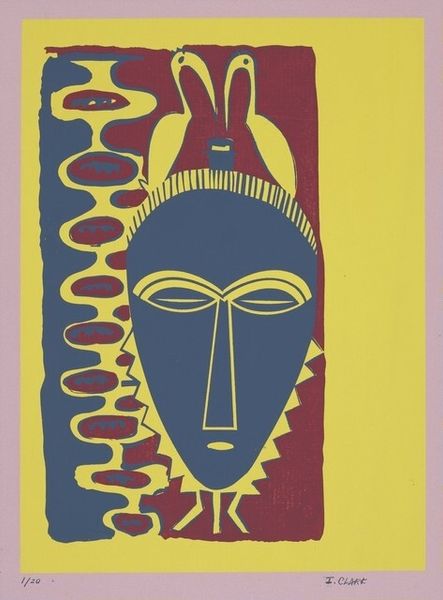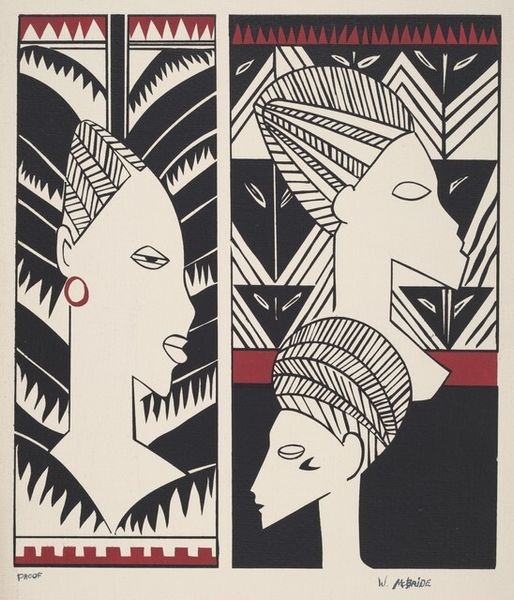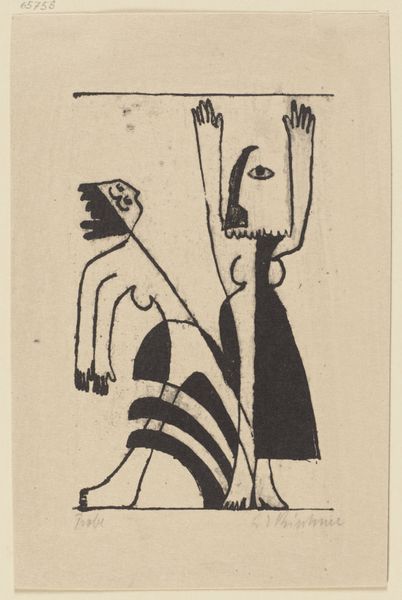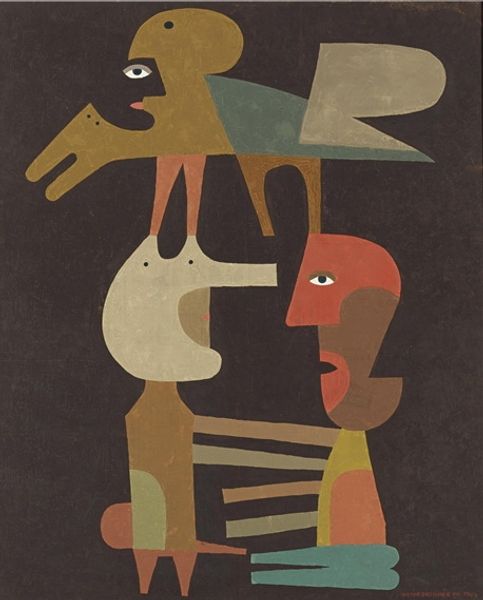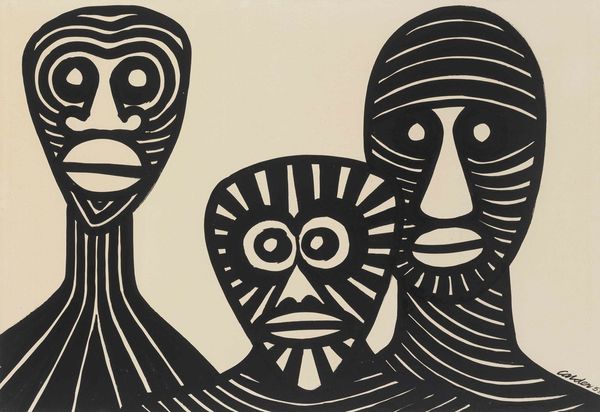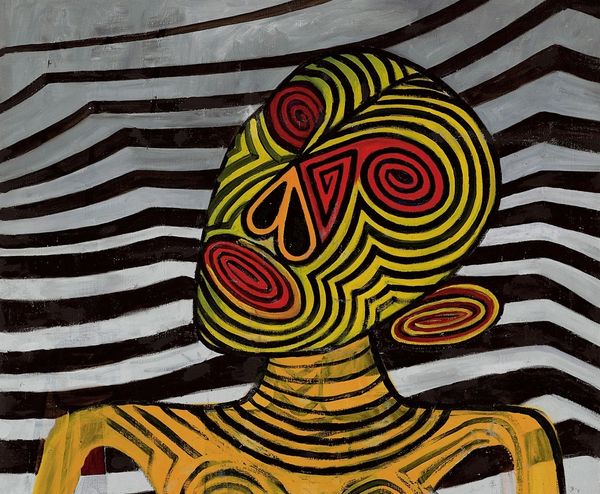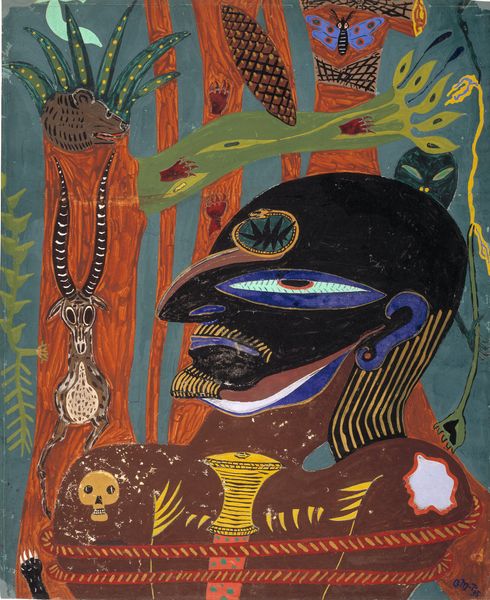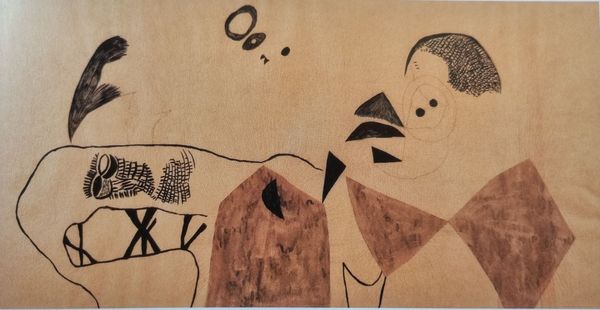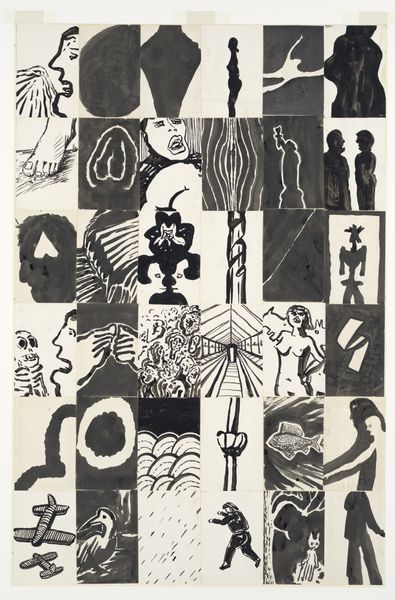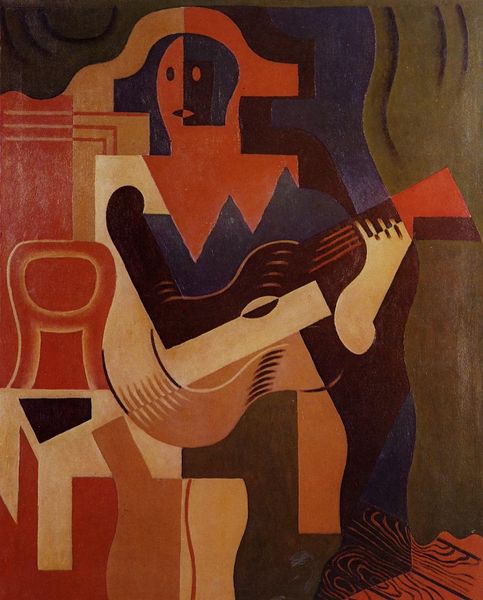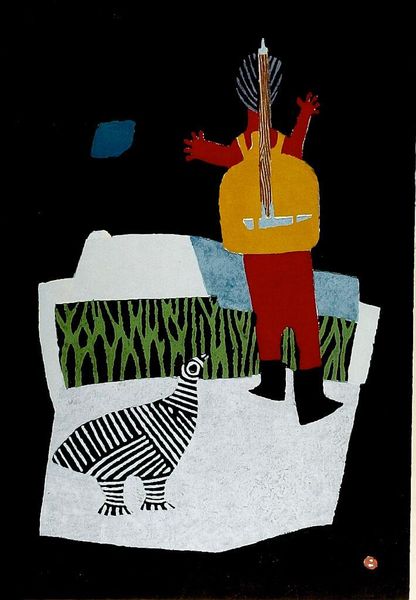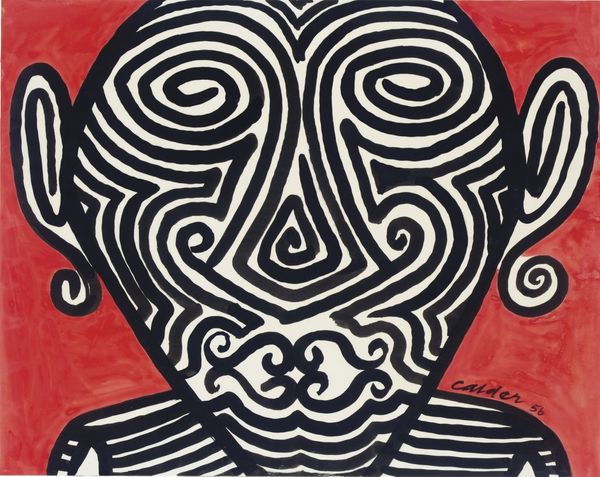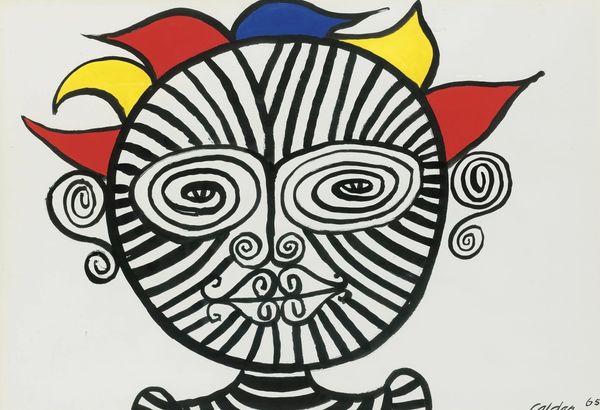
#
african-art
#
narrative-art
# print
#
pop art
#
figuration
#
geometric
#
cartoon carciture
Dimensions: Image: 332 x 293 mm Sheet: 436 x 325 mm
Copyright: National Gallery of Art: CC0 1.0
Curator: William McBride created this evocative print, titled "Untitled (Masks II)" in 1941. The stark contrasts of black, white and red draw you right in. What's your immediate reaction to it? Editor: The figures have an incredible presence. There's a stylized drama here, the flattened perspectives, along with the bold shapes feel almost confrontational, pulling from traditional African art but also echoing a surreal modern aesthetic. Curator: Precisely. McBride's embrace of simplified forms reflects a growing fascination with the "primitive" at the time. I'm curious, what can you make of the image's potential commentary on societal structures? Editor: Looking at this now, knowing it was made in 1941, as the US was ramping up production for World War II, makes me think of it as speaking to labor, race and identity. The printing press, like factories, relies on mechanical reproduction; it can reproduce social biases but can also be a tool to express different intersectional identities that might resist or rewrite a racist, or imperialist narrative. I find the geometric rendering both unsettling and provocative. Curator: I agree. This type of print demands attention. Consider the physical process, the cutting, inking and pressing to realize such crisp forms and lines. McBride almost treats each colour block as a separate object to consider when crafting this work, it’s a rather industrial mindset that, again, mirrors factory production. This type of labor produces multiples and has implications of craft or mechanical labor over individualistic virtuosity. Editor: It also highlights how printmaking could democratize access to art. The materials would be less costly. You could also reproduce artworks with relevant social justice messaging on a broader scale to wider audiences. It reminds me of the murals that Mexican and Chicano artists developed throughout the Southwest as political tools for expression. What is your takeaway? Curator: For me, the artwork underscores that objects hold histories of not only how but why things get made and for whom. Considering process gives weight to its significance. Editor: Yes, it prompts me to remember that we need to situate the artwork within the era, in dialogue with other struggles for visibility and political empowerment, and recognize McBride’s artistic contribution.
Comments
No comments
Be the first to comment and join the conversation on the ultimate creative platform.
